2001-06-01 14:00
Hamburg Port Recorded cf 81mt Container cargoes up 10.8%
The Port of Hamburg recorded its best-ever figures in 1999 when a to
tal of 81mt of sea-borne cargoes were handled. This amounted to an inc
rease of 5.2mt or 6.8% on the previous year’s total.
The container handling volume rose by 10.8% to reach 40.011 mt . Yet a
nother marked increase in container throughput-up 5.4% to 3.74m TEUs-w
as mainly due to the extremely favourable figures in the second half o
f 1999. The million-TEU mark was reached for the first time the final
quarter of last year with 14.8% growth in a year-on-year comparison.
Bulk cargo turnover(37.25mt) was the highest figure achieved since 198
5. The lion’s share of this 3.9% increase came from suction cargoes(u
p 22%), grab cargoes rose by 3.7% but liquid cargoes continued to decl
ine, falling by 467,000t or 3.4% in 1999.
Last year, Hamburg maintained its position under the world’s top ten
container ports and Europe’s No. 2. Seriously hit by the Russian and
Asian economic crises in 1998, container throughput steadied again in
1999 and the volume of container cargo handled rose in the course of t
he year.
On Asian routes, for example, traffic rose by more than 2 mt in 1999.
Far East routes still represent Hamburg’s most important region, acco
unting for 42% of container throughput and 24% of the Port’s total ca
rgo-handling volume. The growth in container traffic was mainly due to
a sharp rise in exports to Asia(mainly the Far East) and extremely ra
pid growth of incoming cargoes from European ports in Britain, the Med
iterranean and the North Range also rose significantly. The stabilizat
ion of SE Asia’s economic recovery is particularly important for Asia
n container traffic. The 1998 imbalance in trade with Asia caused by t
he collapse of exports and the above-average increase in imports natur
ally had a dramatic effect on the capacity utilization of containershi
ps sailing between Hamburg and Asia and led to a high demand for empt
y containers in the Far East. In the course of last year, however, thi
ngs returned to normal. Movements of empties, which rose sharply in 19
98, fell back by 16.2% last year.
After the punctual completion of the deepening and widening of the Elb
e channel, shipping companies such as HANJIN and P&O Nedlloyd are alre
ady employing larger containerships on Hamburg routes. Other lines suc
h as COSCO and Evergreen are following suit. Another positive developm
ent for Hamburg’s significance as a port was the opening of China Sh
ipping Line’s European Headquarters in the city and the launch of its
full container service in Hamburg.
In trade with the Baltic Region there was a 24.9% increase in incoming
cargoes whereas outgoing traffic was 5% down on the previous year’s
figure.
In the course of 1999, the volume of cargo handled on South American r
outes recovered to match the 1990 total, West Africa. In contract, rec
orded a significant upturn in traffic, a development mainly due to the
more stable political climate in this region.
All in all, Hamburg has the highest containerization rate(92%) of all
North Range ports.
Despite a slight fall in conventional general cargo(down 3.2% on the 1
998 figure), Hamburg gained market shares in this sector last year. Th
e high frequency of liner services makes Hamburg a more attractive por
t for shippers of conventional general cargo. In the last quarter of 1
999, Hamburg’s general cargo trminals handled the record total of 1mt
of sea-borne cargoes. A fall in demand from SE Asia had a negative ef
fect on the volume of iron, steel and machinery handled but increases
in imports from Eastern Europe and exports to Britain virtually offest
the SE Asian losses. Smaller shipments of German steel exports led to
a decline in charter tonnage last year. However, metal exports as a w
hole rose in 1999. Imports of tropical and citrus fruits increased aga
in last year though there was no recovery from the decline in banana i
mports brought about by climate changes in 1998.
tal of 81mt of sea-borne cargoes were handled. This amounted to an inc
rease of 5.2mt or 6.8% on the previous year’s total.
The container handling volume rose by 10.8% to reach 40.011 mt . Yet a
nother marked increase in container throughput-up 5.4% to 3.74m TEUs-w
as mainly due to the extremely favourable figures in the second half o
f 1999. The million-TEU mark was reached for the first time the final
quarter of last year with 14.8% growth in a year-on-year comparison.
Bulk cargo turnover(37.25mt) was the highest figure achieved since 198
5. The lion’s share of this 3.9% increase came from suction cargoes(u
p 22%), grab cargoes rose by 3.7% but liquid cargoes continued to decl
ine, falling by 467,000t or 3.4% in 1999.
Last year, Hamburg maintained its position under the world’s top ten
container ports and Europe’s No. 2. Seriously hit by the Russian and
Asian economic crises in 1998, container throughput steadied again in
1999 and the volume of container cargo handled rose in the course of t
he year.
On Asian routes, for example, traffic rose by more than 2 mt in 1999.
Far East routes still represent Hamburg’s most important region, acco
unting for 42% of container throughput and 24% of the Port’s total ca
rgo-handling volume. The growth in container traffic was mainly due to
a sharp rise in exports to Asia(mainly the Far East) and extremely ra
pid growth of incoming cargoes from European ports in Britain, the Med
iterranean and the North Range also rose significantly. The stabilizat
ion of SE Asia’s economic recovery is particularly important for Asia
n container traffic. The 1998 imbalance in trade with Asia caused by t
he collapse of exports and the above-average increase in imports natur
ally had a dramatic effect on the capacity utilization of containershi
ps sailing between Hamburg and Asia and led to a high demand for empt
y containers in the Far East. In the course of last year, however, thi
ngs returned to normal. Movements of empties, which rose sharply in 19
98, fell back by 16.2% last year.
After the punctual completion of the deepening and widening of the Elb
e channel, shipping companies such as HANJIN and P&O Nedlloyd are alre
ady employing larger containerships on Hamburg routes. Other lines suc
h as COSCO and Evergreen are following suit. Another positive developm
ent for Hamburg’s significance as a port was the opening of China Sh
ipping Line’s European Headquarters in the city and the launch of its
full container service in Hamburg.
In trade with the Baltic Region there was a 24.9% increase in incoming
cargoes whereas outgoing traffic was 5% down on the previous year’s
figure.
In the course of 1999, the volume of cargo handled on South American r
outes recovered to match the 1990 total, West Africa. In contract, rec
orded a significant upturn in traffic, a development mainly due to the
more stable political climate in this region.
All in all, Hamburg has the highest containerization rate(92%) of all
North Range ports.
Despite a slight fall in conventional general cargo(down 3.2% on the 1
998 figure), Hamburg gained market shares in this sector last year. Th
e high frequency of liner services makes Hamburg a more attractive por
t for shippers of conventional general cargo. In the last quarter of 1
999, Hamburg’s general cargo trminals handled the record total of 1mt
of sea-borne cargoes. A fall in demand from SE Asia had a negative ef
fect on the volume of iron, steel and machinery handled but increases
in imports from Eastern Europe and exports to Britain virtually offest
the SE Asian losses. Smaller shipments of German steel exports led to
a decline in charter tonnage last year. However, metal exports as a w
hole rose in 1999. Imports of tropical and citrus fruits increased aga
in last year though there was no recovery from the decline in banana i
mports brought about by climate changes in 1998.
많이 본 기사
- 야권 안전운임제 재도입 추진…정부·수출기업 난색캐나다 항만 파업 심화…西밴쿠버·東몬트리올 봉쇄수요 강세에 컨운임지수 3주 연속 상승…동남아 두자릿수↑부산신항웅동개발, 현대글로비스에 웅동지구 2단계 물류부지 공급KSS해운, 3분기 영업익 280억…31%↑BDI 1634포인트…케이프선 시장서 강세 이어가국내 건설사, 베트남 하이퐁에 복합물류센터 건설대선조선, 그리스 선사에 1000TEU급 컨테이너선 1척 인도스마트 보세운송 신고·관리서비스로 항만물류 활성화 힘 보탠다中 상하이항, 올해 9개월 컨처리량 3910만TEU ‘역대최대’
- “입거수리 영향” 대한해운, 3분기 영업익 9% 감소한 678억원BDI 1692포인트…중대형선 시장서 물동량 강세 이어가프랑스 CMA CGM, 3분기 순이익 3.8조…전년比 7배↑정기선 HD현대 부회장, 1년만에 수석부회장 승진광양 율촌산단에 친환경 선박 전문화 공장 세운다BPA-해수부, ‘해외물류센터’로 중소·중견기업 수출 돕는다IPA, 컨터미널 운영사와 내년 운영 방향 청사진 공유YGPA 박성현 사장, ‘아동학대 예방’ 릴레이 참여UPA·화주물류협의회·탱크터미널협의회, 물동량 증대 방안 모색CJ대한통운, 美 조지아 콜드체인 물류센터 개소…시장 공략 가속화





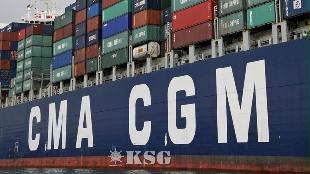

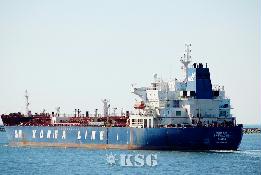
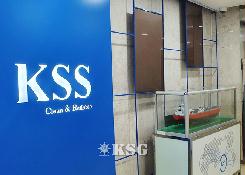
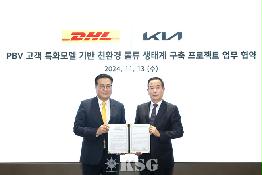
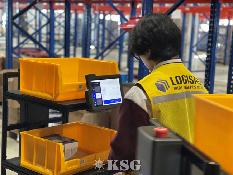
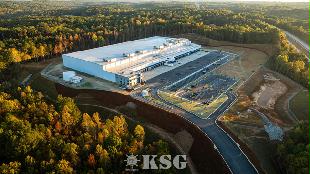
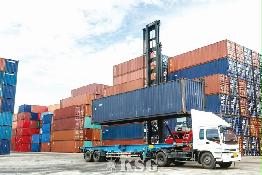
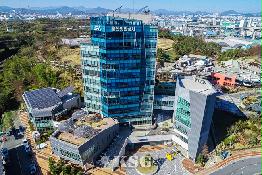
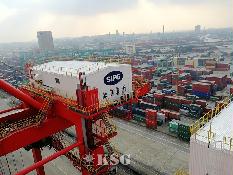

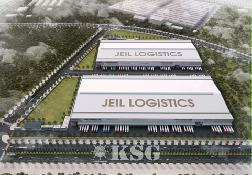
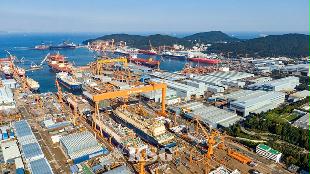


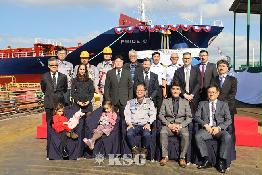
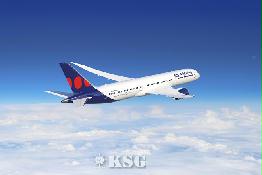

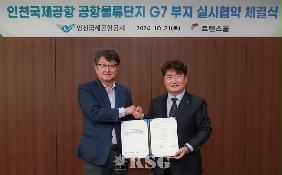

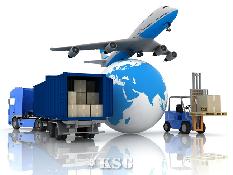

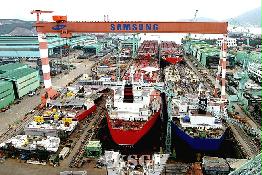


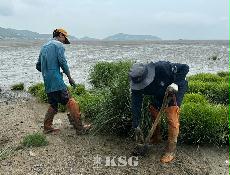



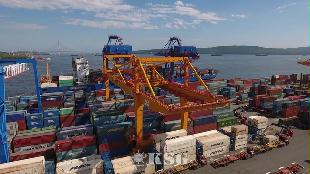
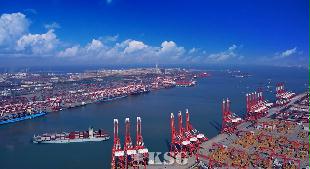

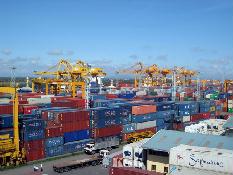






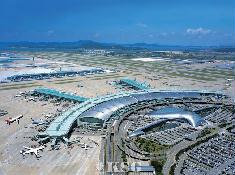
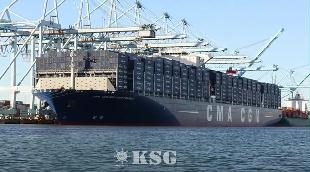
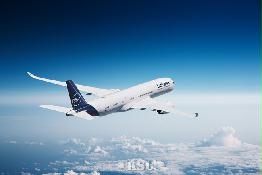
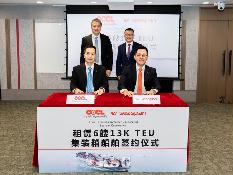
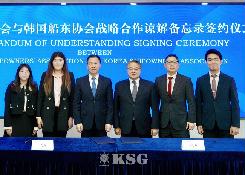





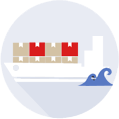
















0/250
확인